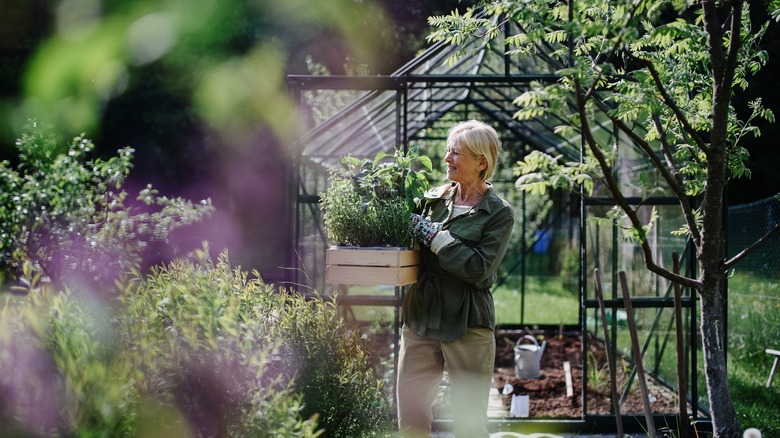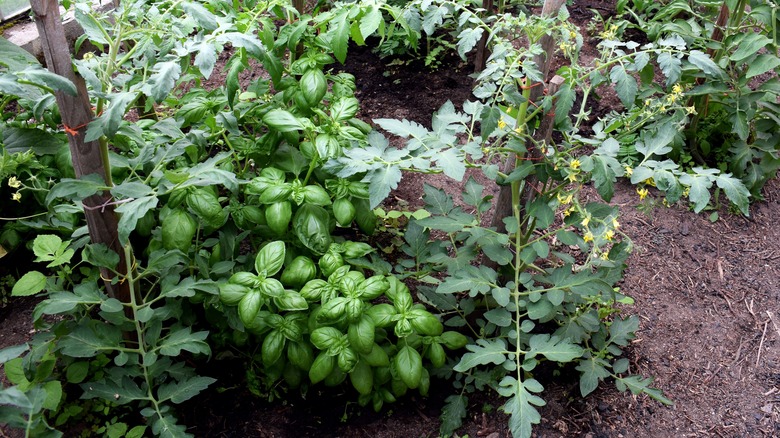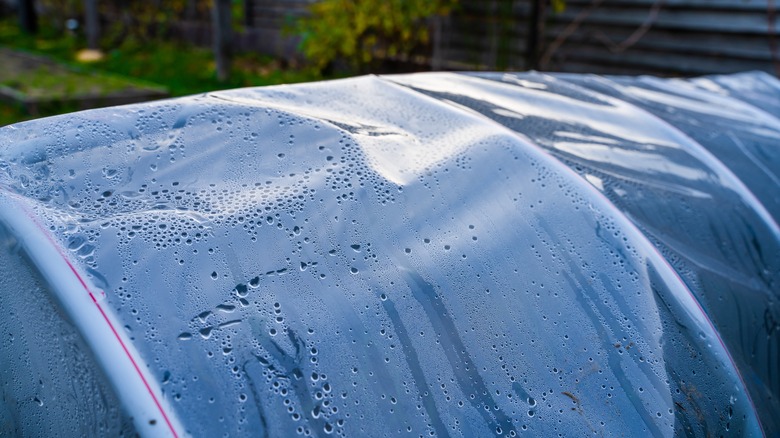Herbs That Will Thrive When Grown In A Greenhouse
Many of the most delicious, pungent, and uniquely flavored herbs happen to be native to some of the warmest climates in the world — particularly the Mediterranean region. Several of the most popular herbs in North America — including basil, bay leaves, chives, cilantro, dill, fennel, lavender, mint, oregano, parsley, rosemary, saffron, sage, tarragon, and thyme — all hail from the Mediterranean region, which ranges from a temperate to a dry tropical climate. Since most regions within North America do not fall into such warm climate zones, growing these herbs in your own Mediterranean garden can be challenging.
Fortunately, you can circumvent most of the challenges of growing warmer-climate herbs by growing them inside a greenhouse. In addition to popular Mediterranean herbs, many warming herbs and spices, such as ginger, turmeric, and cardamom, tend to thrive in a greenhouse setting. Consider this your guide to setting up and caring for delicious, healthy herbs year-round (if you wish) in a greenhouse.
How to set up herbs in a greenhouse
Before you set up your greenhouse, you'll want to select a grouping of herbs that naturally grow in the same or very similar conditions. For example, basil, chives, cilantro, dill, fennel, mint, parsley, and other herbs from the Mediterranean region will all require similar warm and fairly dry conditions. Once you've selected the herbs you'd like to grow, you'll need to decide whether you want to start them from seeds or purchase seedlings and whether you'll grow your herbs in containers or directly in the ground.
If you choose to grow your herbs from seed, you'll need seed trays or very small containers with drainage holes for planting and a seed-starting soil mix. Seedlings, on the other hand, can be planted directly into the ground or the containers where you plan to grow them. If you plan to grow multiple herbs in the same area or container in your greenhouse, be sure to research each herb's needs and ensure that you're aware of potential pitfalls, like the aggressive spreading habit of mint or the allelopathic nature of fennel and rosemary.
Arrange your herbs within the greenhouse to receive the appropriate amount of sun exposure, implementing partial shade if necessary. Depending on the desired environment for your selected herbs, you'll likely need to outfit your greenhouse with a heater in the winter and perhaps an evaporative cooling system in the summer.
Caring for your greenhouse herbs
Once you've planted your purchased seedlings or germinated your seeds and transplanted your homegrown seedlings, it's time to truly begin your herbal greenhouse journey. Caring for herbs in a greenhouse is very similar to caring for them in your outdoor garden or as indoor houseplants. The main difference is your ability to monitor and control the temperature and humidity level of the growing environment. Since space in a greenhouse can be more limited, you'll need to be very careful to keep your herbs well-trimmed enough to allow for sufficient airflow between plants. This airflow can be boosted by utilizing fans.
Keep in mind that if your greenhouse herbs are growing in containers, they may need to be watered and fertilized more often than they would in the ground. Closely monitor your greenhouse's temperature and humidity levels, and watch for signs of mold on your plants or soil. Since a greenhouse can trap heat and humidity, their levels can sometimes become too high even for tropical herbs. Utilize proper ventilation, fans, heaters, or dehumidifiers when necessary. Otherwise, care for your herbs as you would outdoors, and enjoy the controllable environment and extended growth season a greenhouse can provide.


